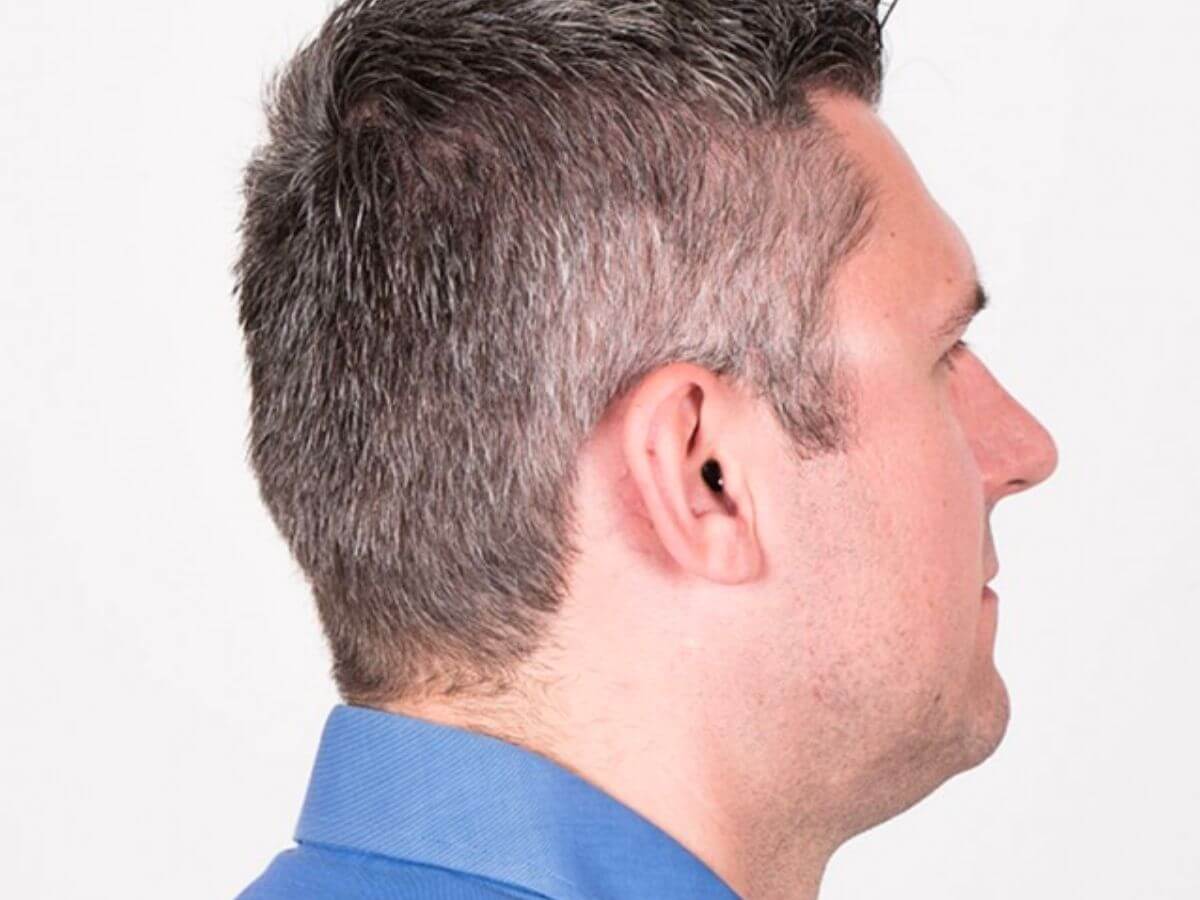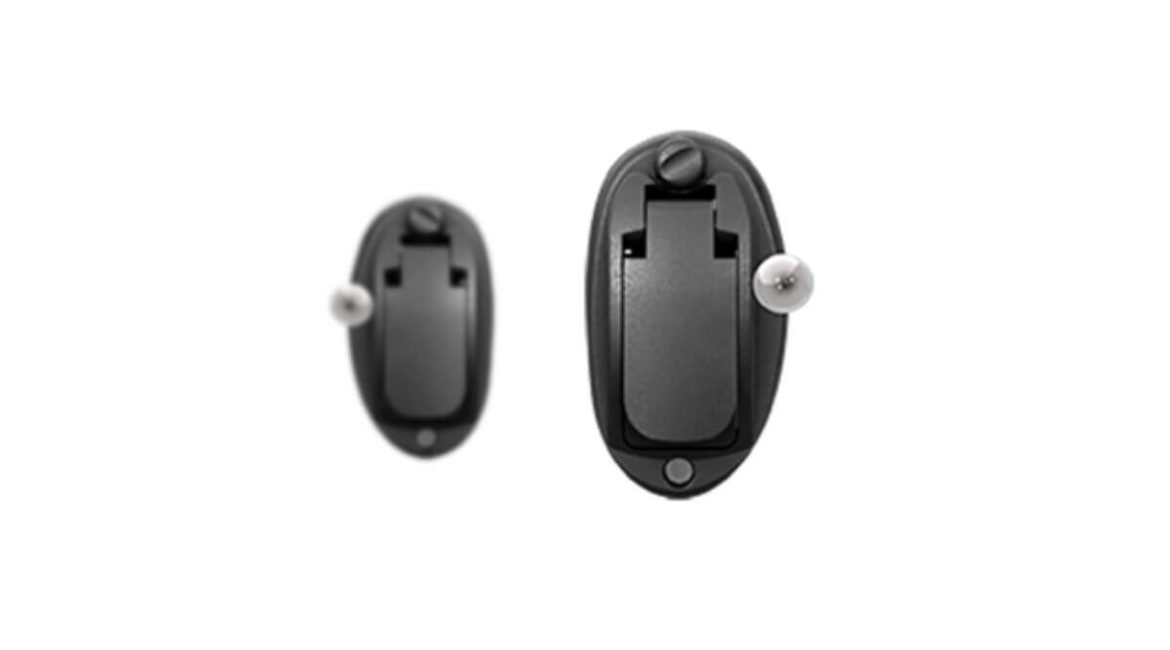Image via bernafon.com
Modern hearing aids are smaller and smarter than ever before, thanks to groundbreaking technological advancements. The Invisible-In-Canal (IIC) hearing aid features an unobtrusive form that is ideal for individuals who want to have discreet hearing aids.
The IIC is a device that is worn deep into the ear canal and allows you to hear more noises around you with a gadget that is hardly visible in and around your ear. As a result, you get the advantage of a hearing aid without having to reveal that you’re using one.
The Smallest Invisible Hearing Aids
Invisible in the Canal Hearing aids are little devices that fit within the ear canal entirely. These hearing aids are customized to match your specific ear shape.
An earmold will be used by your hearing care practitioner to design custom hearing aids that fit deep inside your ear canal and is almost unnoticeable. These are truly invisible hearing aids on the market.
In addition to these models, there are a variety of other types of hearing aids.
The Invisible-In-Canal (IIC) hearing aid, like other hearing aids, is made up of five main components. They are as follows:
- Microphone
- Amplifier
- Computer chip
- Loudspeaker
- Battery
The invisible hearing aids work by detecting sound as it enters the ear canal and amplifying it before sending it to the eardrum. It is located closer to your eardrum than conventional hearing aids since it is deeply embedded into your ear canal. A removal line is normally attached to the IIC to aid in insertion and removal from your ear.
How IIC Hearing Aids Differ From Other
There isn’t enough room for the super-powerful hearing aid’s speaker in an IIC device since they are totally contained within the ear. An In-The-Canal (ITC) or Completely-In-The-Canal (CIC) device, which provides more sound control choices, is an alternative approach.
Hearing aids with a Receiver-In-Ear (RIE) or Behind-The-Ear (BTE) receiver are two other tiny devices. RIE aids, unlike IIC, feature a tiny housing that keeps the electrical components out of the ear.
The receiver is located inside the ear, where sound is transmitted through a tube. Except for a little tube that delivers sound into the ear canal for greater amplification, BTE devices are likewise quite unobtrusive and are worn outside the ear.
Because BTE devices do not totally block off the ear, they provide the most lifelike sound.
Who Is a Good Candidate for IIC Hearing Aids
If discretion is essential to you, you’ll be relieved to learn that the majority of hearing aids are so little that others will not see them. The degree of your hearing loss plays a role in determining the optimal style for you. IIC devices are most effective for those who have mild to severe hearing loss.
Cost of IIC Hearing Aids
Invisible hearing aids cost around $2,000 on average, and most individuals require one for each ear. That amount may appear to be excessive, but when you analyze the components that go into the pricing, it may not appear to be such a bad bargain.
How to Care For Your New IIC Hearing Aids

Image via bernafon.com
You can extend the life of your hearing aids by carefully managing them and reducing the likelihood of complications during everyday use. Hearing aids are built to last, but they must be properly cared for. Here are some helpful maintenance hints:
Keep Dirt Out of Your Hearing Aid
Before contacting your hearing aid, ensure your fingers are clean and dry. The hearing aid’s microphone input is quite tiny, and if handled wrong, it might become blocked.
Impacts Should Be Avoided
Dropping the invisible hearing aid on a hard surface is not a good idea. This might happen when you clean or replace the battery. When putting on or taking off your hearing aid, use caution.
Protect Your Hearing Aid From the Damaging Effects of Extreme Heat
Heat should never be applied to your hearing aid. Keep it out of direct sunlight (at home or in a parked car) and away from heaters.
Moisture Should Not Be Allowed to Enter Your Hearing Aid
Before washing, bathing, or swimming, remove your hearing aid from your ear. It should not be left in the bathroom due to excessive moisture levels. Before you put your hearing aids in, clean your ears once in a while. This entails cleaning the outside region of your ear, as well as the bowl-shaped portion just before the ear canal’s entry. Avoid putting cotton buds or Q-tips down into your ear canal since this might push wax deeper within. Moisture and humidity may wreak havoc on your hearing aid’s components. At night, we recommend removing the battery from the hearing aid and leaving the battery compartment open. You can utilize specific drying systems that your hearing care specialist can recommend.
Keep Children and Pets at a Safe Distance
Keep the hearing aid away from children and pets. Hearing aids that are still turned on and lying around produce high-pitched noises that annoy dogs. Hearing aids have been eaten by pets as a result of this.
Hairspray and Make-up Should Be Avoided
Hair spray or make-up powder can block the microphone and cause the volume control switch to jam. Before using body care or cosmetics, take out your hearing aid.
Hygiene of the Ears
Maintain adequate ear hygiene at all times. Your ears must constantly be clean of earwax and debris, such as dry skin or infections, for your hearing aids to work at their optimum. Your hearing care specialist can recommend items to keep your ear or earpieces clean. They may also completely inspect your ear and hearing aids for any blockages caused by ear wax or dirt, as well as ensure that the hearing aids are in good working order.
Keep Your Hearing Aids in a Secure Location
When you’re not wearing your hearing aids, wrap them in a dry towel and keep them away. Keep your hearing aids in their storage case at all times. If you aren’t planning to use your hearing aids for a long time, remove the batteries.
Repairs Should Only Be Done by Professionals
Please keep in mind that only your hearing care specialist should fix your hearing aids. Attempting to do inappropriate maintenance or using improper tools can be harmful to hearing aids. If a screwdriver or oil gets into touch with the electronics or micromechanics, irreversible damage may occur.
Get the Best Invisible Hearing Aid

Image via bernafon.com
Here at J Glasses and Hearing, we are committed to your hearing health. Call us today to set up an appointment for a free hearing screening. We can discuss discreet hearing aid options with you and work with you to find one that fits your budget.

